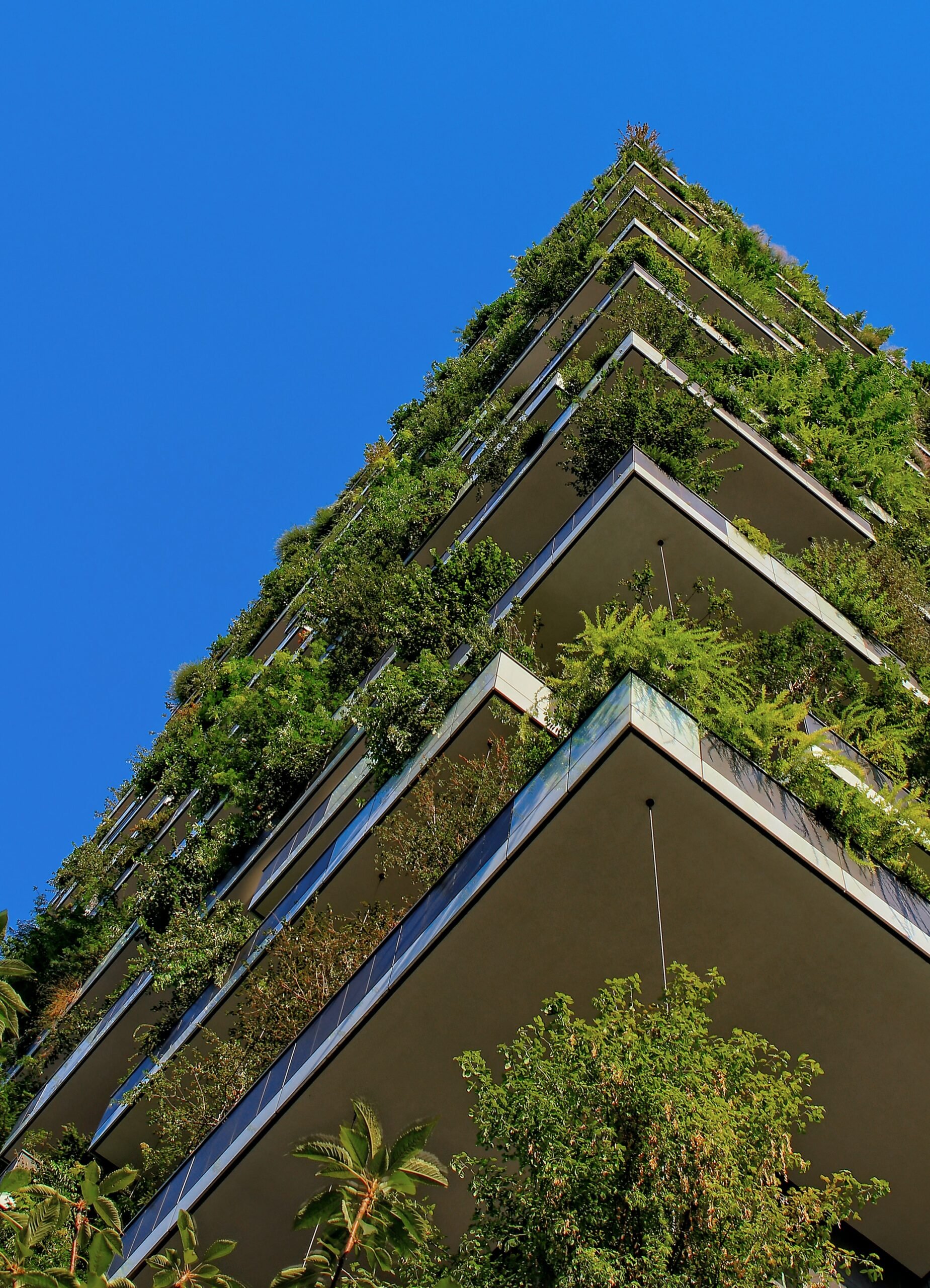This post is part of a two-part series on the future of sustainability in construction
Building designs can play a massive part in health and wellness. They can also be key to ensuring we have a positive lasting bearing on the environment and local communities. Both the construction and design of a building can impact a person’s morale and their overall health through air quality and light.
Over 170,000 new homes were built in 2019 with an 8% increase to the previous year (According to Gov.uk). Buildings and homes are on the up due to the increased population and demand. But whilst there are many considerations in the process of building designs, one important element that is significant now to the ongoing health and climate crisis, is ensuring buildings don’t negatively impact our air quality or any part of our human life. By investing in more ‘greener’ solutions and identifying the best sustainable building materials or methods it can help to positively impact public health.
As our world increasingly becomes more built up and cities become more crowded, design will be critical to overcome not just spatial challenges but health and environmental ones too. We spend so much of our time as humans in buildings and the US Environmental Protection Agency states that we spend “approximately 90% of our time indoors where pollutants can be 2 to 5 times higher than some outdoor regions”. This shows how important it is that building design doesn’t just cut out pollution during the construction process (read part 2 for more information on this) but also in terms of the planning of the design, location and effectiveness of the building itself to reduce ongoing indoor air quality issues.
The importance of air quality in building design
Read on to find out the 3 main ways that air quality can be beneficial throughout the building design process and for not only creating eco-friendly buildings, but building healthy communities.
1. Psychological benefits
By having fresh air accessible without any pollutants, it can help to increase our positive mindset and reduce any stress, anxiety, mood swings or mental health issues. Indoor air quality can also impact our performance at work tasks and affect our overall productivity. There are many scientific and analysis studies that examine the mental health benefits including this research paper by the University of Malaysia which shows that there is a strong correlation to unsatisfied workers when they are situated in an area or building of poor air quality. We all reap the benefits of ‘fresh air’ when we travel to areas of countries that have clean air areas which don’t suffer with pollution, but buildings can still play as massive part in reducing both indoor and outdoor pollutants so we can provide the mental and physical benefits to our local communities.
2. Health and respiratory benefits
The World Health Organisation have labelled indoor air pollution as ‘the world’s largest single environmental health risk with the WHO calculating that around 5 million people die early due to pollution causes” (data presented as of 2017 in by ‘Our World in Data’). Excessive air pollution caused by building design or materials can also lead to many health issues such as respiratory diseases, fatigue, cardiovascular disease, headaches and lung cancer. It’s important that building designers choose materials that will not emit dirty air or help to increase pollutants. Buildings that have sufficient ventilation and avoid excessive gases or synthetic building materials can help to create these clean air spaces in local areas. Smoking over the years has always been a pollutant that should be kept to certain areas to avoid air contamination, but there are so many other pollutants or building factors which are explained here that can cause poor air. It’s key that these potential issues are considered within the planning of buildings to avoid future air pollution issues.
3. Sustainability
Making buildings energy-efficient is important but by investing in buildings with sustainable, green materials or methods means that the building will have more longevity and won’t cause as many issues to local residents. Toxic air can not only cause damage to humans as mention in the other two sections, it can also harm local forests/greenery by not enabling them to function or respirate properly and also ruin buildings by causing materials to corrode and deteriorate overtime. As shown in this article “green is the new black” by Knight Frank, many organisations are relishing the challenge to make buildings and communities more sustainable.
Overall, air quality in buildings can create an environment that helps us to function properly both mentally and physically. As both health and environmental issues are constantly being prioritised by organisations and individuals, building designs will play a massive in part in both of these global issues. The production of materials and the supply chain also has a significant impact on pollution and is discussed in the 2nd part of this article here “Reducing air pollution through the supply chain process”.

